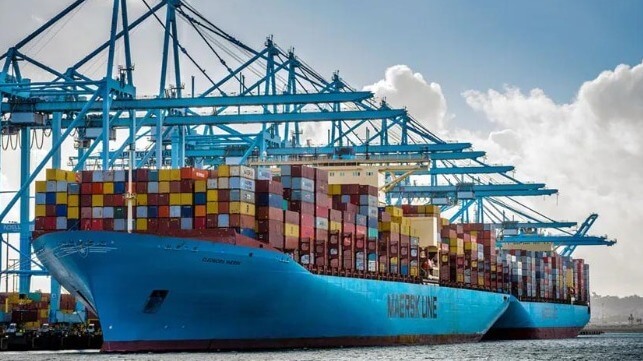Schedule Reliability Improved for Third Consecutive Month in 2022

Schedule reliability for containerships is continuing to improve in 2022 despite the persistence of backlogs in some ports and the effects of the COVID-19 related restrictions impacting Shanghai, the world’s largest container port. New data from analytics firm Sea-Intelligence in their monthly Global Liner Performance report shows that for the third consecutive month reliability improved returning to the average for all of 2021.
“Global schedule reliability continues to slowly creep upwards, recording a marginal month-over-month improvement yet again,” said Alan Murphy CEO of Sea-Intelligence. The data shows that slightly more than a third (35.9 percent) of all containerships across the 34 different trade lanes tracked by the analysts were on schedule bringing the average for the first quarter of 2022 up to 33.5 percent. “Despite being the highest 2022 reliability figure so far, the March 2022 score is still slightly below the 2021 level,” notes Murphy. The average for the first quarter of 2021 was 36.5 percent.
The largest 14 carriers, reported strong monthly gains with a better than three percent improvement over February. Yet, on a year-over-year basis, they were off nearly 10 percent from March 2021 with 11 of the 14 largest carriers reporting declines in schedule reliability. Only Maersk, Hamburg Süd, and Evergreen were able to achieve slight improvements year-over-year. Maersk continues to lead the industry with half of its vessels on schedule while Hamburg Süd retains second place with 45 percent schedule reliability.
Declines in volumes and the ports' efforts to clear backlogs and space out arrivals have contributed to the overall improvements and especially for the U.S. West Coast. Services to the U.S. West Coast, where the major ports implemented programs encouraging vessels to make reservations and slow steam to port showed nearly twice the improvement versus the U.S. East Coast routes. This also corresponds to the reports of increased volumes of containers coming through the East Coast in part as shippers began rerouting their cargos due to the strong backlogs at West Coast ports at the beginning of the year.
Sea-Intelligence is also reporting the third consecutive month of declines in the average delays for vessels. Since the beginning of 2022, the average delay has declined by nearly three-quarters of a day but remains at 7.25 days.
“Despite the improvement, the average delay figure has now been over seven days since August 2021, and continues to be the highest across each month when compared historically,” says Murphy.
The U.S. West Coast ports, however, reported the strongest improvements with the days behind schedule leveling off between the West and East coast routes, averaging just over 12 days on both coasts. These levels however are near twice the average for all routes.
Industry observers have also begun to worry about the potential for rising delays when Shanghai begins to relax its restrictions. At the same time, retailers are expected to bring forward shipments earlier into 2022 both to avoid potential delays if there are labor actions on the West Coast when the longshoremen’s contracts expire this summer and in an effort to avoid the delays they experienced in 2021.
